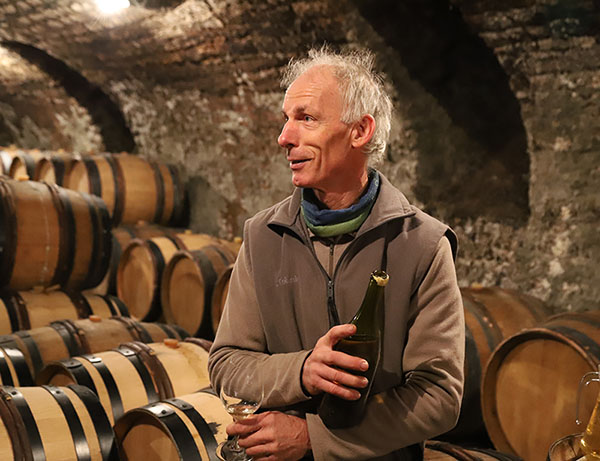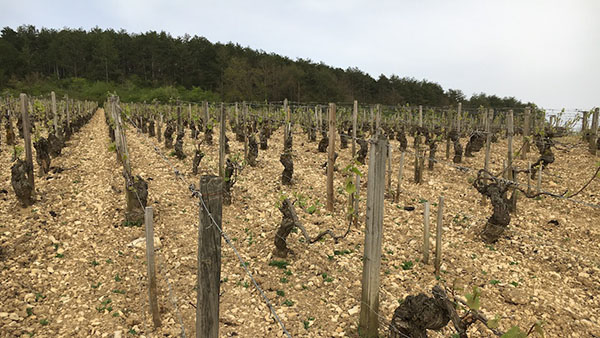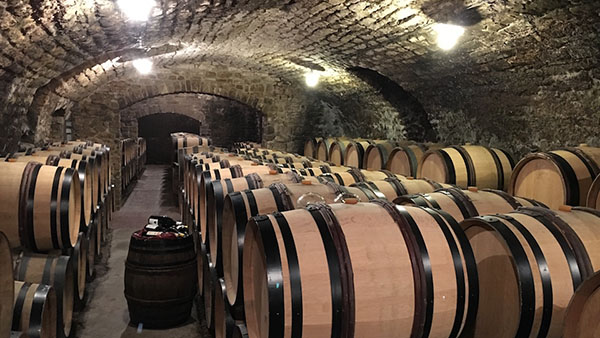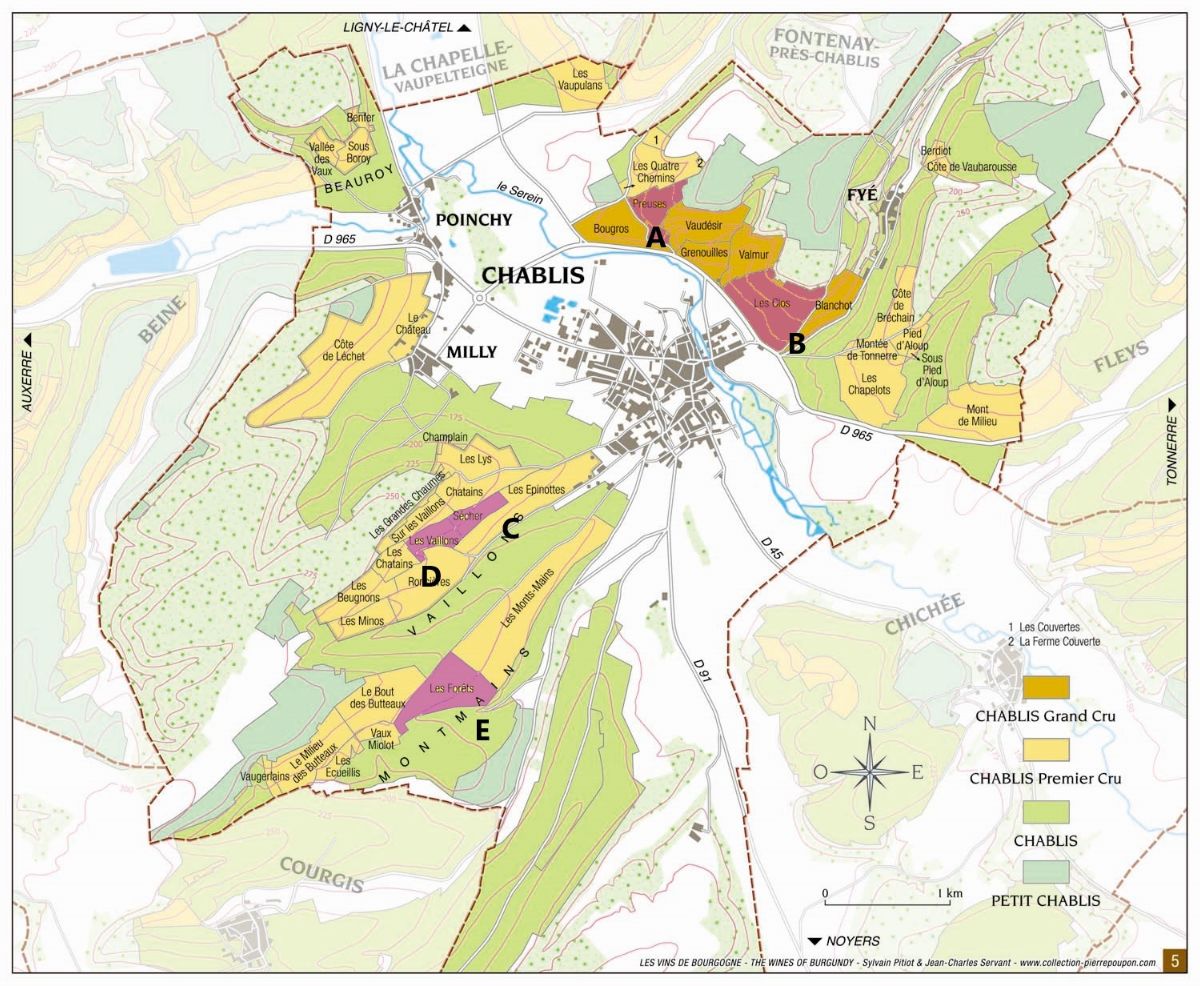
Product information
Vincent Dauvissat Chablis 1er Cru ‘Montée de Tonnerre’ 2022
$595
Description
Note: from a .30 ha parcel in Côte de Bréchain
Allen Meadows, Burghound 93 Points WK 92-94
Only 1 left in stock
Size & Type
Other

$595
Note: from a .30 ha parcel in Côte de Bréchain
Allen Meadows, Burghound 93 Points WK 92-94
Only 1 left in stock
Vincent Dauvissat is considered one of the greatest producers in Chablis. Alongside the similarly esteemed Francois Raveneau, these two producers continue to define great Chablis.
Vincent Dauvissat are world-famous for their coveted holdings in Les Clos, producing wines with incredible levels of expressiveness, depth and complexity. These qualities come from a high percentage of old vines (a 50+ year average); a south-westerly exposure; and a classic Kimmeridgian soil that is mostly clay. Such soils are cool—cooler and retain less heat. They are most sensitive to frost in the spring and the fruit ripens more slowly, meaning more time to develop flavour and concentration.

Vincent Dauvissat is arguably the finest Domaine in Chablis, owning some of the oldest and best vineyards, including prized sections of the grand crus, Les Clos and Les Preuses. Established in 1931 by Robert Dauvissat, the Domaine has passed down from father to son for three generations. Robert’s son René is to thank for establishing the reputation of the Domaine. Vincent began working with his father, René, in the 1970s and today runs the Domaine.
The Dauvissats remain one of Chablis’ great traditionalists. As the torch has been passed down from generation to generation, little has changed here.
If anything, the wines have become increasingly profound since Vincent officially took reins in 1989. One significant change is his preference for natural farming, using vine treatments sparingly, if at all. In 2002 he oversaw the implementation of biodynamic farming methods. His approach to oak is carefully considered, used to add complexity and dimension to his piercingly mineral concentrated wines; some of barriques are 30+ years old.
They resulting wines are rarely exotic in their youth, tight as drum in fact. But with age – and they do age by gracefully by the decade – they evolve and develop into exciting wines of the sophistication and intrigue.
Vincent Dauvissat farms nearly 30 acres of meticulously kept vineyards, following sustainable, organic and biodynamic methods. These vines (4.5 acres of Vaillons, 2 of Séchets, and 9.4 of Fôrets among the Premiers Crus; 2.5 of Preuses and 4.5 of Les Clos among the Grands Crus) are splendidly situated on hillsides underlain by Jurassic limestone. Yields are limited to about 50 hectoliters per hectare (3.7 tons per acre), which is modest by the standards of the region.

Vinification at the domaine is painstaking and traditional at a time when many growers in Chablis have adopted methods permitting increased yields producing simple wines that reach maturity quickly. Vincent Dauvissat, on the other hand, gives all his wines at least a year in Nevers oak, a portion of which is new each vintage. This practice, imposed on top-quality grapes slowly and carefully fermented, results in wines that are deep, complex, and long-lived. They are clearly characteristic of their respective cru, exhibiting the steely bite so typical of Chablis, but with a purity, intensity of flavor, and structural soundness increasingly rare in the region’s wines.

Vincent Dauvissat—who forsook a career as a shepherd to become one of France’s most celebrated vignerons—is technically retired, but in reality remains very much a continuing presence at his eponymous domaine, and it was with him that I tasted the 2022s from barrel, along with a selection of 2021s. Spring frost in 2022, unlike in 2021, was followed immediately by warm weather, so the secondary buds flourished and delivered an ample, homogenous crop. As I wrote last year, there’s no grower in the region who has done a better job of retaining all of Chablis’s classical signatures in the warmer, sunnier vintages of the last decade, and this is once again true of 2022, which retains the tension and salinity one seeks at this address in a vintage where many others have produced extremely fruit-driven, soft wines.
If 2022 represents a success in Chablis’s new paradigm, 2021 is a throwback, with higher acidity and a more reductive profile. “We picked just before gray rot began, but botrytis was rampant, which is why the wines have lost their green highlights this year,” Vincent observed. Yet despite that, at this early stage the 2021s are less aromatically exotic than either 2013 or 2016 at the same point in time and seem set for a graceful evolution: readers might want to think of them as a somewhat fleshier, more generous version of the 2007 vintage at this address.
Readers will remember that farming here is organic but without certification. The harvest is by hand, and the wines ferment in tank before racking to barrel with the lees (Raveneau’s Chablis, by contrast, are racked to barrel more or less without their lees), spending a second winter in wood before bottling. A first bottling, destined for the American market, sees a light filtration, while a second bottling—some of which is sealed with wax, some of which sees a foil capsule—takes place a little later in the year without filtration.
William Kelley, The Wine Advocate
Vincent Dauvissat is located in Chablis. Technically a part of Burgundy, Chablis represents the northern more part of the region and lies to the north of Beaune and to the south of Paris.
The map below shows the location of Dauvissat’s vineyards around Chablis. These include: A – Chablis Grand Cru ‘Les Preuses’, B – Chablis Grand Cru ‘Les Clos’, C – Chablis Premier Cru ‘Sechet’
D – Chablis Premier Cru ‘Vaillons’, E – Chablis Premier Cru ‘Les Forest’.

Once again there is a whiff of the exotic on the lychee nut-inflected aromas of white peach, acacia blossom, oyster shell and lemongrass. The wonderfully sleek and refined medium-bodied flavors brim with both minerality and dry extract on the stony, moderately austere and sneaky long finale. I really like the gorgeous mouthfeel and this ageworthy effort is a stunner of a MdT. Drink 2033+
Note: from a .30 ha parcel in Côte de Bréchain
Aromas of pear, Myer lemon, green apple, clam liquor and white flowers preface Dauvissat's 2022 Chablis 1er Cru Montée de Tonnerre, a medium to full-bodied, ample and satiny wine with a textural attack that segues into a bright, mineral mid-palate, concluding with a saline finish.
Where in the world does the magic happen?
Vincent Dauvissat EARL, Rue Émile Zola, Chablis, France
You must be logged in to post a comment.